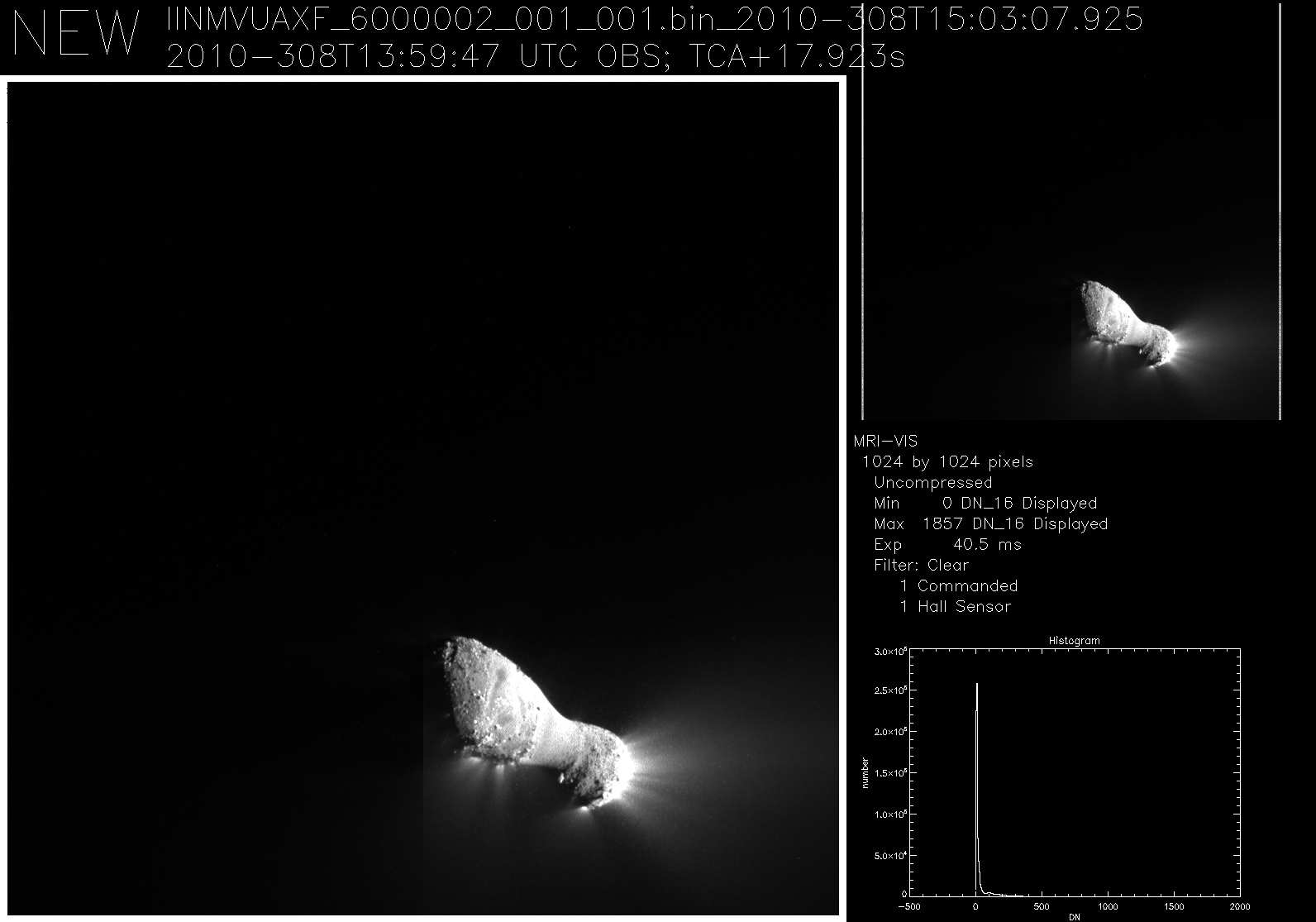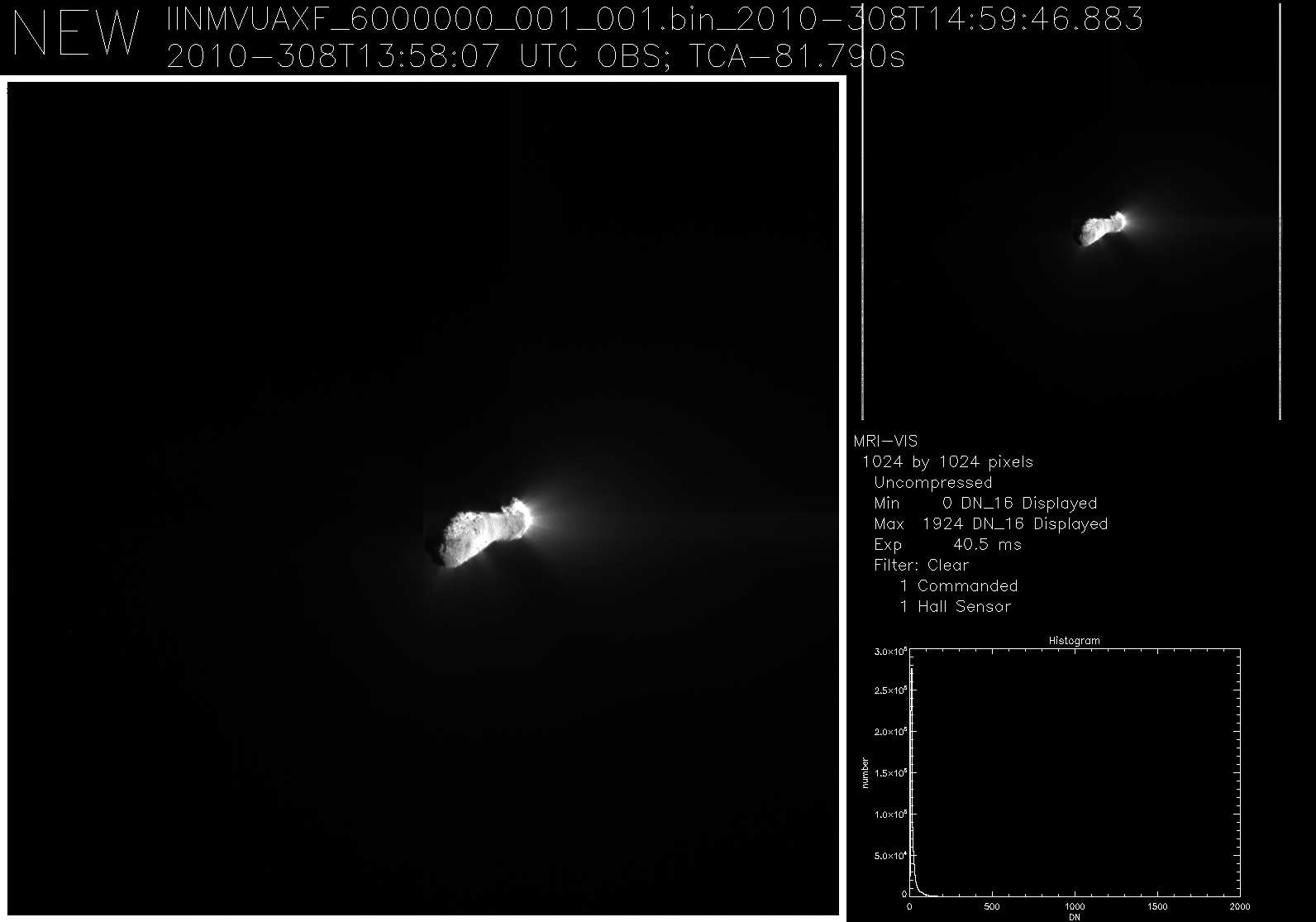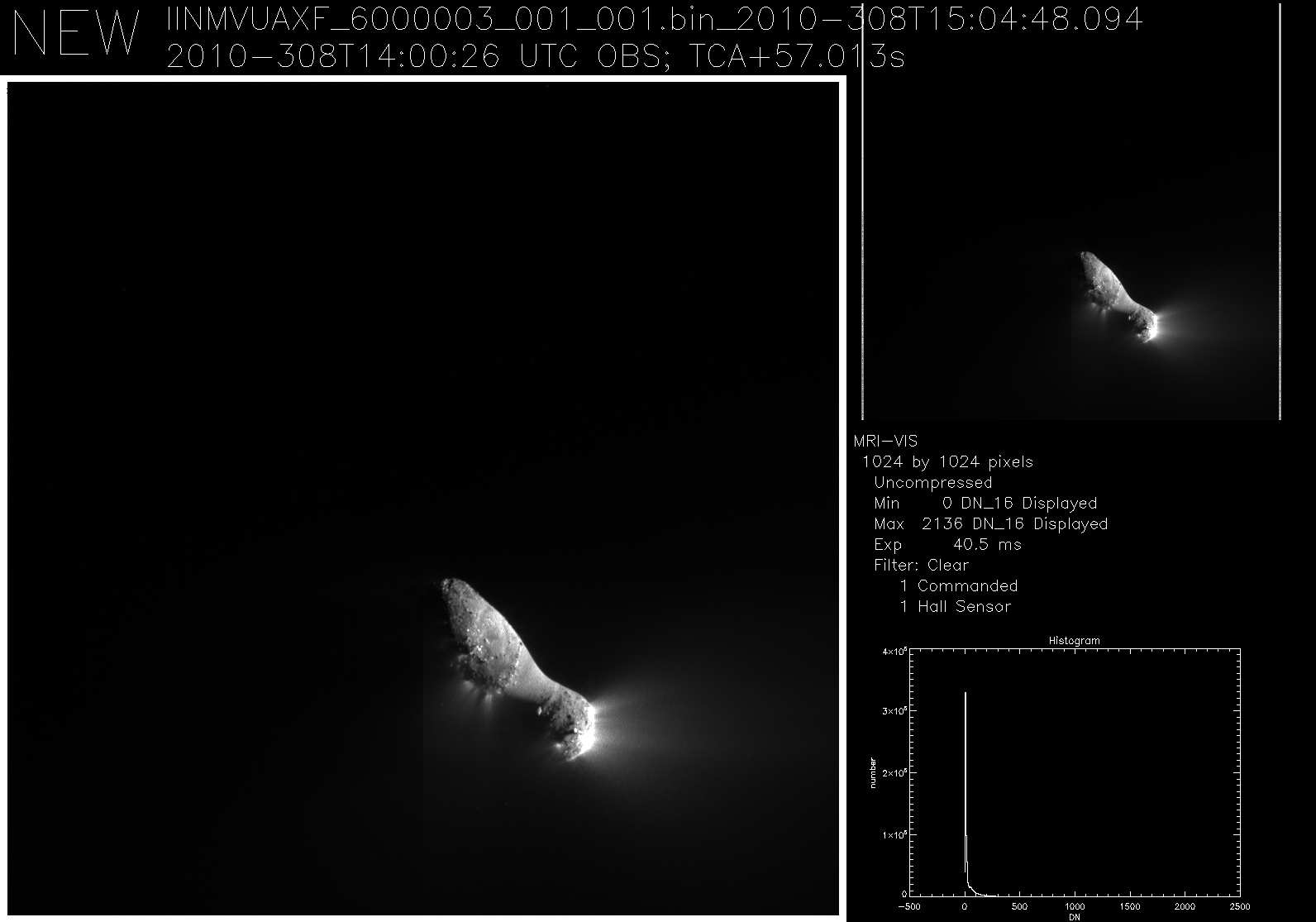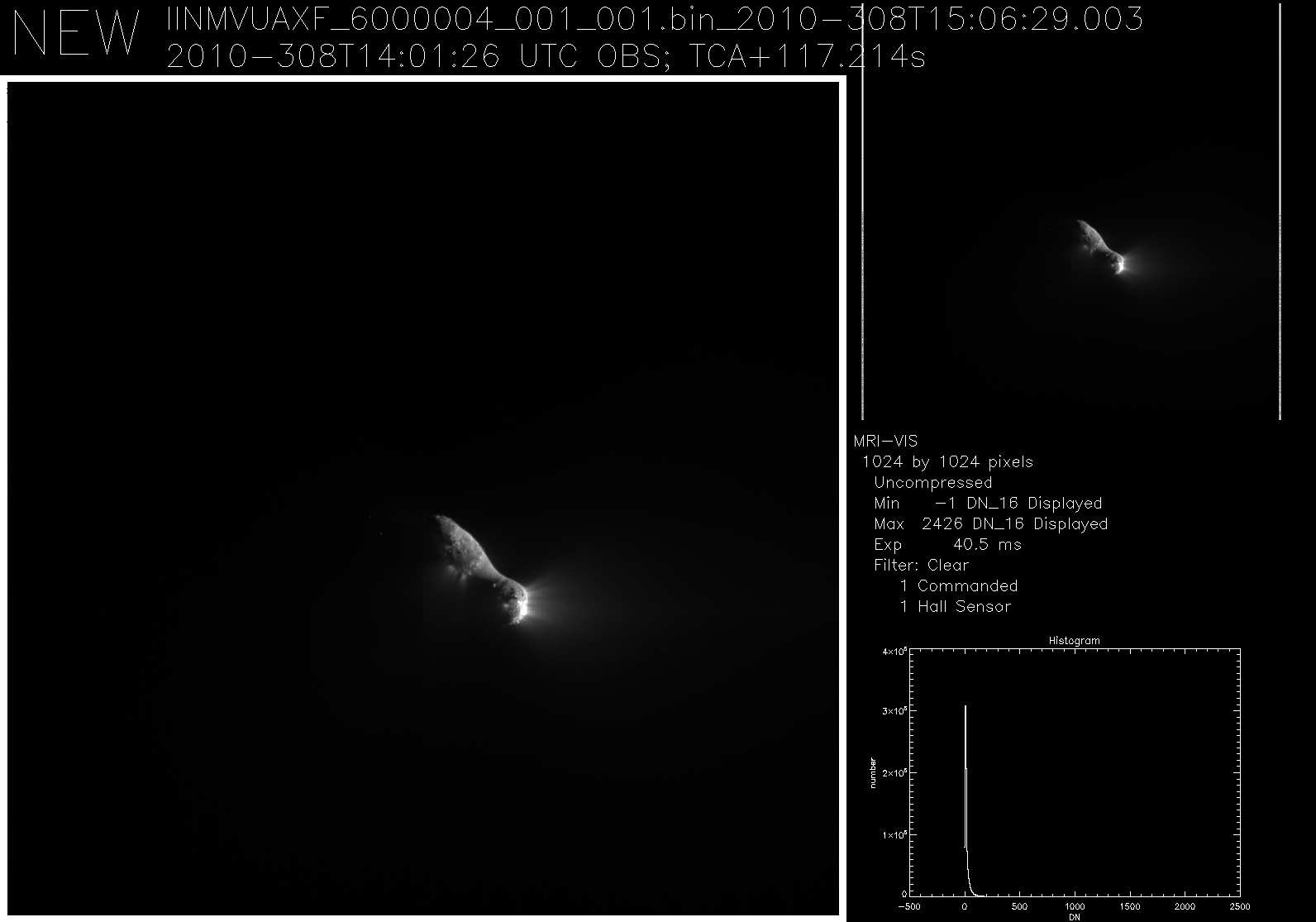EPOXI
Two intriguing investigations -- One flight-proven spacecraft
News: NASA Mission Successfully Flies by Comet Hartley 2, 2010.11.04
Press Release
NASA Mission Successfully Flies by Comet Hartley 22010.11.04
 Comet Hartley 2 can be seen in glorious detail in this image from NASA's EPOXI mission. It was taken as the spacecraft flew by around 6:59 a.m. PDT (9:59 a.m. EDT), from a distance of about 700 kilometers (435 miles). Jets can be seen streaming out of the nucleus.
Comet Hartley 2 can be seen in glorious detail in this image from NASA's EPOXI mission. It was taken as the spacecraft flew by around 6:59 a.m. PDT (9:59 a.m. EDT), from a distance of about 700 kilometers (435 miles). Jets can be seen streaming out of the nucleus.
Credit: NASA/JPL-Caltech/UMD
 Credit: NASA/JPL-Caltech/UMD
Credit: NASA/JPL-Caltech/UMD
 Credit: NASA/JPL-Caltech/UMD
Credit: NASA/JPL-Caltech/UMD
 Credit: NASA/JPL-Caltech/UMD
Credit: NASA/JPL-Caltech/UMD
 These close-up views of comet Hartley 2 were taken by NASA's EPOXI mission during its flyby of the comet on Nov. 4, 2010. They were captured by the spacecraft's Medium-Resolution Instrument.
These close-up views of comet Hartley 2 were taken by NASA's EPOXI mission during its flyby of the comet on Nov. 4, 2010. They were captured by the spacecraft's Medium-Resolution Instrument.
Credit: NASA/JPL-Caltech/UMD
PASADENA, CALIF. - NASA's EPOXI mission successfully flew by comet Hartley 2 at about 7 a.m. PDT (10 a.m. EDT) today, and the spacecraft has begun returning images. Hartley 2 is the fifth comet nucleus visited by a spacecraft.
Scientists and mission controllers are currently viewing never-before-seen images of Hartley 2 appearing on their computer terminal screens.
"The mission team and scientists have worked hard for this day," said Tim Larson, EPOXI project manager at NASA's Jet Propulsion Laboratory, Pasadena, Calif. "It's good to see Hartley 2 up close."
Mission navigators are working to determine the spacecraft's closest approach distance. Preliminary estimates place the spacecraft close to the planned-for 700 kilometers (435 miles). Eight minutes after closest approach, at 6:59:47 a.m. PDT ( 9:59:47 a.m. EDT), the spacecraft's high-gain antenna was pointed at Earth and began downlinking vital spacecraft health and other engineering data stored aboard the spacecraft's onboard computer during the encounter. About 20 minutes later, the first images of the encounter made the 37-million-kilometer (23-million-mile) trip from the spacecraft to NASA's Deep Space Network antennas in Goldstone, Calif., appearing moments later on the mission's computer screens.
"We are all holding our breath to see what discoveries await us in the observations near closest approach," said EPOXI principal investigator Michael A'Hearn of the University of Maryland, College Park.
A post-encounter news conference will be held at 1 p.m. PDT (4 p.m. EDT) in the von Karman auditorium at JPL. It will be carried live on NASA TV. Downlink and schedule information is online at http://www.nasa.gov/multimedia/nasatv/. The event will also be carried live on http://www.ustream.tv/nasajpl2.
EPOXI is an extended mission that utilizes the already "in-flight" Deep Impact spacecraft to explore distinct celestial targets of opportunity. The name EPOXI itself is a combination of the names for the two extended mission components: the extrasolar planet observations, called Extrasolar Planet Observations and Characterization (EPOCh), and the flyby of comet Hartley 2, called the Deep Impact Extended Investigation (DIXI). The spacecraft has retained the name "Deep Impact."
JPL manages the EPOXI mission for NASA's Science Mission Directorate, Washington. The University of Maryland is home to the mission's principal investigator, Michael A'Hearn. Drake Deming of NASA's Goddard Space Flight Center, Greenbelt, Md., is the science lead for the mission's extrasolar planet observations. The spacecraft was built for NASA by Ball Aerospace & Technologies Corp., Boulder, Colo.
For more information about EPOXI, visit: http://www.nasa.gov/epoxi and http://epoxi.astro.umd.edu/ .
DC Agle
Jet Propulsion Laboratory, Pasadena, Calif
818-393-9011
agle [at] jpl [dot] nasa [dot] gov
Dwayne Brown
Headquarters, Washington
dwayne.c.brown [at] nasa [dot] gov
Lee Tune
University of Maryland, College Park
301-405-4679
ltune [at] umd [dot] edu
RELEASE: 2010-371, Source
